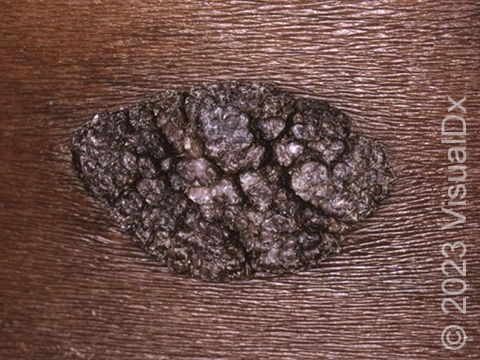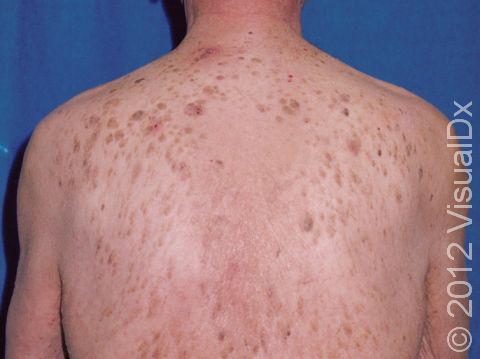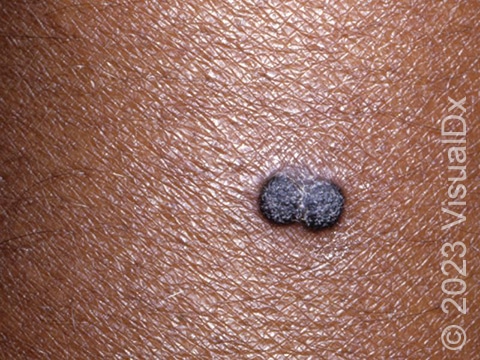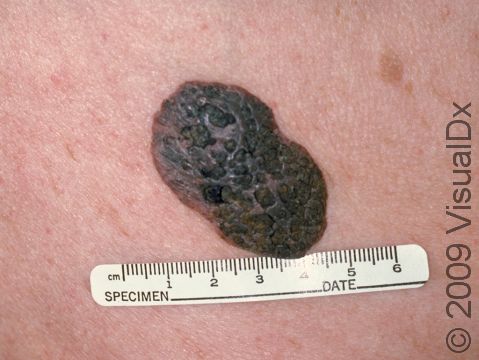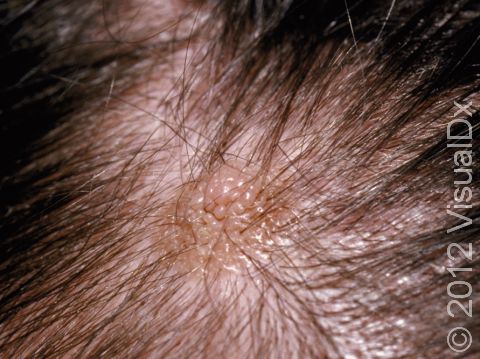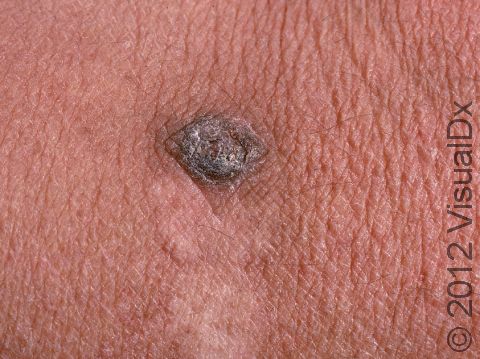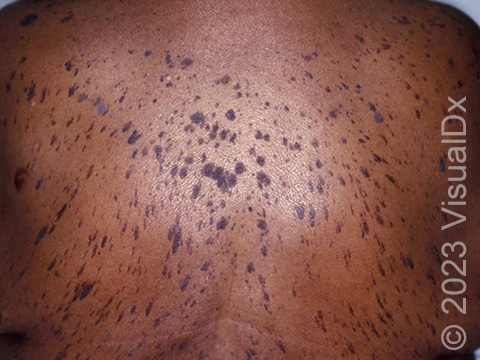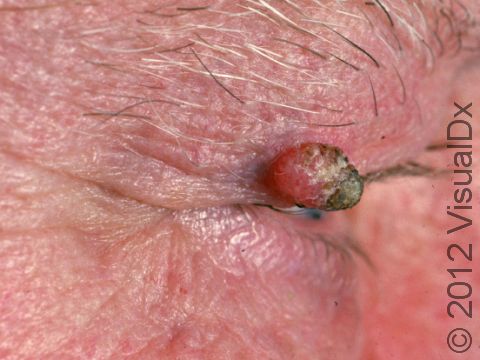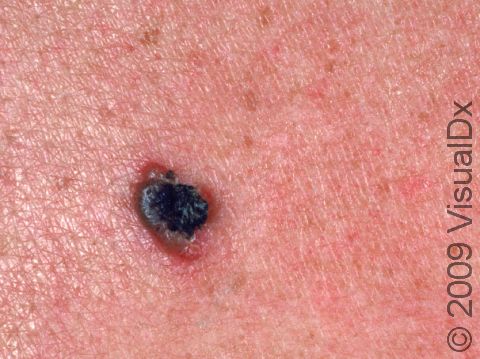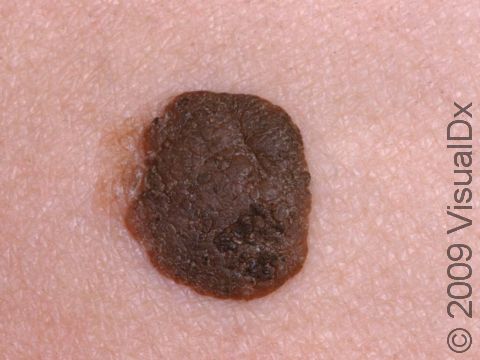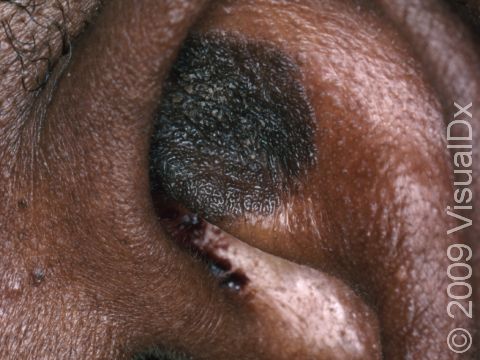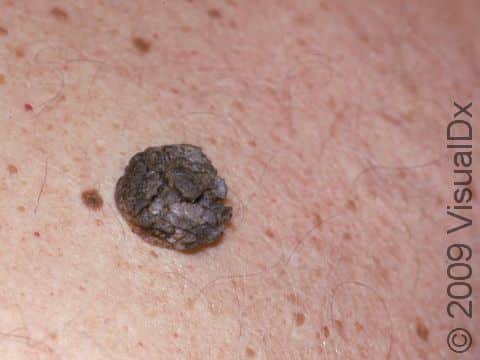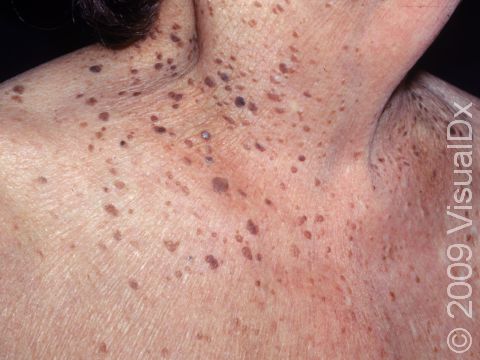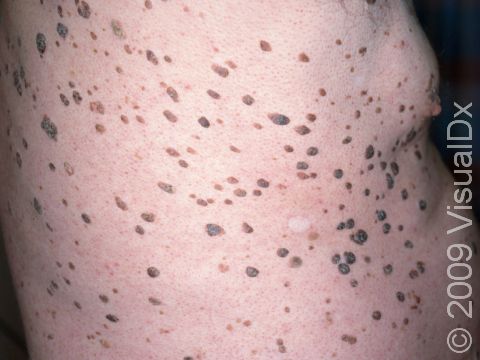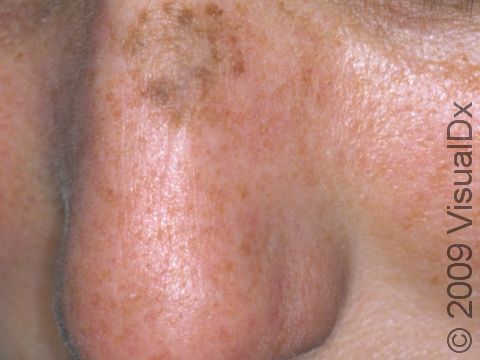Seborrheic Keratosis
Seborrheic keratoses are common noncancerous (benign) growths of unknown cause seen in adults due to a thickening of an area of the top skin layer. Seborrheic keratoses may appear as if they are stuck on to the skin. They have distinct borders, and they may appear as papules (small, solid bumps) or plaques (solid, raised patches that are bigger than a thumbnail). They may be the same color as your skin, or they may be pink, light brown, darker brown, or very dark brown, or sometimes may appear black.
Who's At Risk?
Seborrheic keratoses can occur any time after puberty, and almost everyone older than 50 has one or more of these skin growths. They may increase in number with age. Members of the same family can have an inherited tendency to grow multiple seborrheic keratoses. Men and women are equally as likely to develop them. People with darker skin colors tend to develop seborrheic keratoses less frequently than those with lighter skin colors.
Signs & Symptoms
Seborrheic keratoses can occur anywhere on the body, except for the palms, soles, and mucous membranes (areas such as in the mouth or anus). They most commonly occur on the chest and back. Seborrheic keratoses do not go away on their own, and they do not become cancerous.
They usually start as light brown or skin-colored, slightly raised areas, which can be round or oval and of varying size (usually smaller than a thumbnail, but sometimes much larger). As they grow thicker, seborrheic keratoses may become dark brown to almost black and appear to be “stuck on” to the surface of the skin. The surface may feel smooth or rough. In lighter skin colors, they may be pink or any shade of brown. In darker skin colors, they may be any shade of brown, purple, gray, or blackish.
Self-Care Guidelines
No treatment is needed unless there is irritation from clothing, such as itching or bleeding.
Note that:
- There is no way to prevent new seborrheic keratoses from forming.
- Some lotions containing alpha hydroxy acids, salicylic acid, or urea may make the areas feel smoother with regular use but will not eliminate them.
- Over-the-counter freezing techniques are available but are usually not effective.
Treatments
Removal can be accomplished with freezing (cryosurgery), scraping (curettage), burning (electrocautery), lasers, or acids. Your dermatologist or other medical professional might conduct a biopsy if the growth looks unusual.
Visit Urgency
If a lesion on your skin is growing, bleeding, painful, or itchy, see your dermatologist or another medical professional. Similarly, consult a medical professional for any growth that is more than one color, that is dark brown or black, or that looks different than any of your other skin growths.
Seborrheic keratoses can be removed, but removal is considered a cosmetic issue and is usually not covered by insurance.
Trusted Links
References
Bolognia J, Schaffer JV, Cerroni L. Dermatology. 4th ed. Philadelphia, PA: Elsevier; 2018.
James WD, Elston D, Treat JR, Rosenbach MA. Andrew’s Diseases of the Skin. 13th ed. Philadelphia, PA: Elsevier; 2019.
Kang S, Amagai M, Bruckner AL, et al. Fitzpatrick’s Dermatology. 9th ed. New York, NY: McGraw-Hill Education; 2019.
Last modified on June 25th, 2024 at 2:46 pm

Not sure what to look for?
Try our new Rash and Skin Condition Finder
